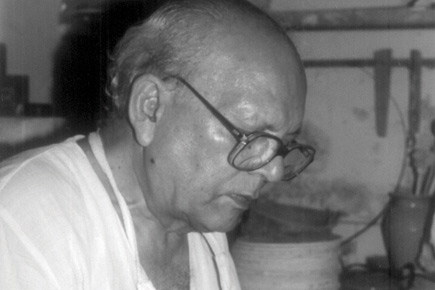EXCERPT
It is sad that in the age of utility and instant success children seldom come across truly enchanting teachers who touch their souls. Instead, they find themselves amidst ‘private tutors’ or ‘coaching centre guides’ specialized in selling the capsule knowledge for achieving success in the crudely material domain of select occupations. Yet, The New Leam believes that the vision/ reality of a meaningful teacher-student relationship have to be communicated. Here is a beautiful reflection by Devi Prasad—a great art teacher inspired by the likes of Tagore and Gandhi.

A good teacher is one who is unassuming and whose presence gives a feeling of assurance to the children. They feel that their teacher has a great deal to give them, and they can go to him or her without any fear or inhibition. Such teachers do not teach, give lectures or preach. Nevertheless, their students get much help from them in the process of learning. I have seen teachers who are careful in making sure that children do not become too conscious bout their identity as teachers, and of the contribution they make to the learning process of the children. So much so, if asked what their taught has taught them, some children may even say ‘He/she does not teach us anything!’ And yet they might be very attached to him or her, sometimes even habitually dependent.
What is the secret of the success of such a teacher?
Firstly, a good teacher makes every effort to create an atmosphere of learning. The atmosphere of learning is the best teacher and I should inspire.
Secondly, a good teacher understands the child, knows the real needs of childhood and of each child in the class. A good teacher will treat every child as an individual personality and will respect him or her as such. It is by knowing the child that one learns child psychology and can dwell deep into it. Books can and often help, but they are not essential. They are useful to those who seek knowledge from their own experience.
The third and perhaps the most important factor is that of the student-teacher relationship. It is a relationship of one chaitan with another chaitan—one who is enlightened with the other who is on the way to enlightenment. There is no technical formality of any kind in this relationship. The teacher and the pupil are two human beings, and their relationship implies a healthy encounter between two individuals.
Teacher and pupil relationships concern both sides. The teacher is not the only arty that gives all the time; both have to constantly nurture the spirit of exchange. Rabindranath Tagore wrote: ‘The teacher’s heart continues to receive every moment of his life, and that is why he continuously gives himself totally. He finds the proof of his truth and honesty in the process of giving and from the joy he receives from it.’
SOURCE: Devi Prasad, Art: The Basis of Education, NBT, Delhi, 1998














